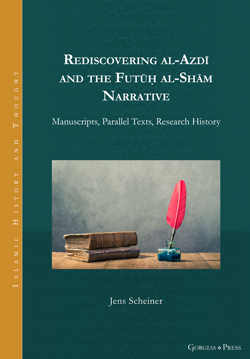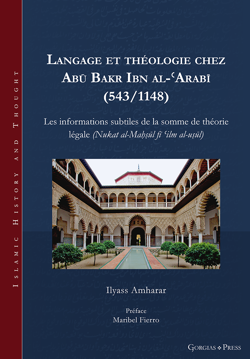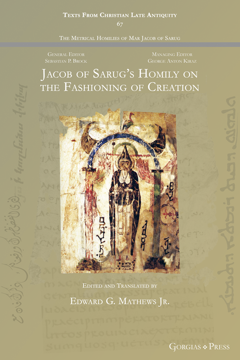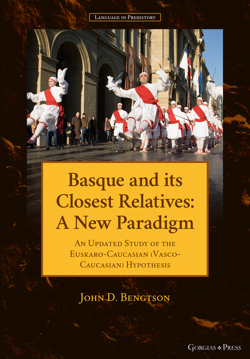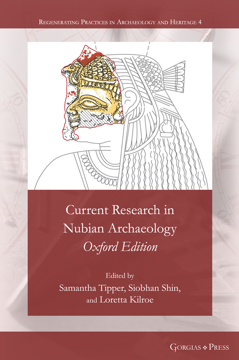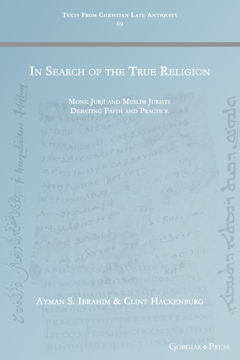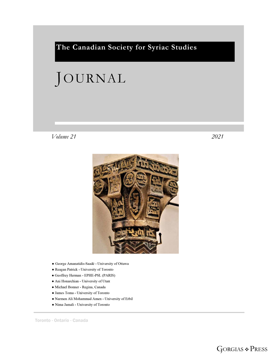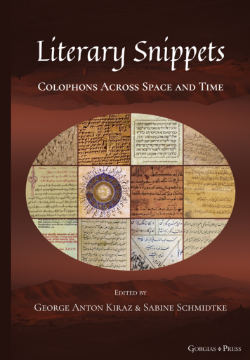Rediscovering al-Azdī and the Futūḥ al-Shām Narrative
Manuscripts, Parallel Texts, Research History
Series: Islamic History and Thought 28
ISBN: 978-1-4632-4382-1
The Futūḥ al-Shām (The Conquests of Greater Syria), usually attributed to Abū Ismāʿīl Muḥammad b. ʿAbdallāh al-Azdī al-Baṣrī, is one of the primary sources used for historians studying the early Muslim expansion into Greater Syria. This study revaluates the Futūḥ al-Shām narrative and the question of its compiler-author, investigating the history of the narrative as text through an analysis of a new manuscript and important parallel texts, and revisiting the evidence and hypotheses previous scholars have put forward on both al-Azdī’s life and the Futūḥ al-Shām narrative’s text. It thus offers an overview of the history of Oriental and Islamic Studies on the basis of one work.
$140.00 (USD)
Langage et théologie chez Abū Bakr Ibn al-ʿArabī (543/1148)
Les informations subtiles de la somme de théorie légale (Nukat al-Maḥṣūl fī ʿilm al-uṣūl)
Series: Islamic History and Thought 31
ISBN: 978-1-4632-4384-5
An edition and commentary of the legal thought of the influential theologian, Qāḍī Abū Bakr Ibn al-ʿArabī.
$114.95 (USD) $91.96 (USD)
Jacob of Sarug's Homily on the Fashioning of Creation
Edited and Translated by Edward G Mathews Jr
Series: Texts from Christian Late Antiquity 67
ISBN: 978-1-4632-4386-9
The long memra translated here in this volume presents the seven parts of the homily on Creation in a single volume.
$59.40 (USD)
Basque and its Closest Relatives
A New Paradigm
Series: Language in Prehistory 1
ISBN: 978-1-4632-4411-8
This book is a comprehensive and detailed treatment of the Euskaro-Caucasian hypothesis – a proposal that the Basque language is most closely related to the North Caucasian language family.
$156.00 (USD)
Maimonides
A Radical Religious Philosopher
By Shalom Sadik
Series: Judaism in Context 30
ISBN: 978-1-4632-4391-3
Was Maimonides a radical philosopher who subtly argued for a naturalist world and who saw the obligation to keep the Torah's commandments as a social and moral obligation – or was he a conservative Jewish believer who only tried to formulate philosophical arguments in favour of a revealed religion? This question has been central to the interpretation of Maimonides from the 12th century until modern times. In the four chapters of this book, Shalom Sadik argues for a radical philosophical interpretation of Maimonides.
$105.00 (USD)
Current Research in Nubian Archaeology. Oxford Edition
Oxford Edition
ISBN: 978-1-4632-4393-7
Sudan, now split into the Republic of Sudan and the Republic of South Sudan, boasts a rich cultural heritage that has in recent years become the increasing focus of an international community of archaeologists, anthropologists and historians. This volume brings together papers presented at the Third Sudan Studies Annual Conference, a unique forum for interdisciplinary work.
$94.00 (USD)
In Search of the True Religion
Monk Jurjī and Muslim Jurists Debating Faith and Practice
Series: Texts from Christian Late Antiquity 69
ISBN: 978-1-4632-4394-4
In the thirteenth-century, a debate transpired over the course of several days between a monk named Jurjī and several Muslims jurists in the city of Aleppo. This debate represents a careful and sophisticated example of a literary genre that had been developing among the Christians living under Islamic rule since the seventh century. The immense popularity of this work is demonstrated by the sheer volume of surviving manuscripts, which number around hundred. This volume provides a critical edition and translation of the text.
$65.00 (USD)
Journal of the Canadian Society for Syriac Studies 21
Edited by Amir Harrak
ISBN: 978-1-4632-4396-8
A refereed journal published annually by the Canadian Society for Syriac Studies.
$75.00 (USD)
Journal of Language Relationship 19/1-2
Editor-in-Chief Vladimir Dybo; Managing Editor George Starostin; Editorial Secretary Tatiana Mikhailova; Editorial Board Anna Dybo, Manuel Molina, M. N. Saenko & Ilya Yakubovich
Series: Journal of Language Relationship 19/1-2
ISBN: 978-1-4632-4398-2
The Journal of Language Relationship is an international periodical publication devoted to the issues of comparative linguistics and the history of the human language. The Journal contains articles written in English and Russian, as well as scientific reviews, discussions and reports from international linguistic conferences and seminars.
$74.00 (USD)
Literary Snippets
Colophons Across Space and Time
Edited by George Anton Kiraz & Sabine Schmidtke
Series: Gorgias Handbooks 64
ISBN: 978-1-4632-4400-2
The colophon, the ultimate or “crowing touch” paragraphs of a manuscript or a book, provides readers with a the historical context in which the scribe produced the manuscript (or the publisher, a book). At its most fundamental level, the colophon gives us the “metadata” of the manuscript: who was the scribe? When and where was the manuscript produced? For whom was it produced and who paid for it? But colophons are far more rich. They are literary works in their own right, having a style and rhetoric independent of the main literary text of the manuscript. Some are assertive, providing contextual data about the scribe/publisher and manuscript/book; others are expressive, demonstrating the scribe’s feelings and wishes. Some are directive, asking the reader for an action; others declarative, providing all sorts of statements about the scribe/publisher or even the reader. The latter sometimes provide historical facts otherwise lost to histories: wars, earthquakes, religious events, legal agreements, etc. This edited volume brings together scholars from various disciplines to study colophons in various languages and traditions across space and time.
$120.00 (USD) $96.00 (USD)
